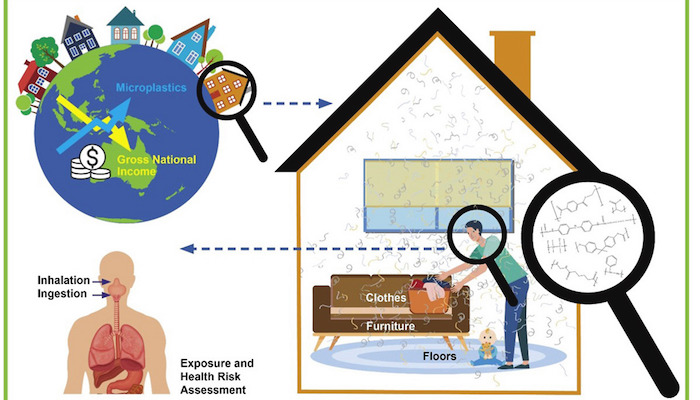Australian homes contain some of the world’s highest concentrations of indoor microplastics, according to a groundbreaking international study by Macquarie University researchers. The study of the minuscule, potentially toxic fragments compared the amount of microplastics found in the household dust of more than 100 homes across 29 countries.

Carpet fans: a study analysing the amount of microplastics in household dust found 60 per cent of Australian homes surveyed had carpet on floors, compared with 40 per cent in other countries.
Microplastics, which measure from 5mm down to a micrometre (0.001 mm), flake off from the synthetic fabrics in our clothes and furniture, from children’s toys, plastic utensils and an ever-growing range of plastic items now found all over the world.
Although the fibres are small enough to breathe in, and can potentially accumulate in our bodies, there is so far no clear evidence on the long-term impact of microplastics on humans.
“Australia had the second-highest amount of microplastics in household dust among higher-income countries,” says Dr Neda Sharifi-Soltani, of Macquarie’s School of Natural Sciences, who was the lead author of the research.
The researchers collected household dust samples from 108 houses in 29 countries, each household categorised according to its country’s gross national income.
There were 16 countries classified as high-income (Australia, Barbados, Belgium, Canada, Chile, Croatia, Cyprus, Estonia, France, Germany, Netherlands, New Zealand, Singapore, South Korea, Switzerland and USA); six were medium-income (Brazil, China, Indonesia, Iran, Malaysia and Thailand) and seven were low-income (Bangladesh, Ghana, India, Kenya, Nigeria, Nepal and Ukraine).
Every single sample from all 108 households included microplastics, made up of a wide variety of synthetic polymers.
Data not to be sneezed at
“As well as collecting petri dishes of household dust, we also surveyed households about who lived in the household, their occupations, the type of flooring, and how and when floors were cleaned,” says Sharifi-Soltani.
The study found that microplastic loads were greatest in the countries with lowest incomes.

I
Not so fantastic plastic: Microplastics flake off from the synthetic fabrics in our clothes and furniture, from children’s toys, plastic utensils and an ever-growing range of plastic items says household dust researcher Neda Sharifi-Soltani.
In high-income countries, an average of 1257 fibres daily were deposited per square metre, compared to 1268 per day average in middle-income countries, and 3518 fibres daily in lower-income countries – with Ghana having by far the highest concentration, of 9981 fibres per square metre deposited each day.
Of the 16 high-income countries studied, Australia had the second-highest concentration of microplastics, averaging 3095 fibres per square metre every day.
“This difference in cleaning practices could be explained by a lack of electricity or by the high relative cost of a vacuum cleaner in lower-income countries,” she says.
Sharifi-Soltani says this suggests that gross national incomes had an indirect impact on household microplastics levels.
“Where there was the same frequency of vacuuming, there was no significant difference in microplastic deposition rate between homes from countries with high, medium or low incomes, so the economy itself does not affect microplastic levels,” she says.
What was in the dust?
The researchers used specialised microscopes – stereo/fluorescence microscopy and infrared spectroscopy – to analyse the microplastics particles and identify the wide variety of synthetic polymer fibres.
No matter what country we collected the dust from, the single biggest influence on the amount of microplastics in household dust was ... how often the floors were vacuumed
“Our correlation analysis showed that most of the microplastics found in household dust came from inside the home, not outside,” she says.
Sharifi-Soltani says the type of microplastic polymers in various household’s dust was affected by the type of flooring in the house.
“The deposition rate of polyvinyl was significantly greater in houses with wooden floors compared to houses without,” she says, adding that this raises some concerns, as polyvinyl can be associated with cancer incidence.
“Houses with carpeted floors deposited significantly more polyethylene fibres than those with other types of flooring,” she adds.

One of the more striking differences in Australian results, was that there was significantly more carpet, she says, with about 60 per cent of the Australian homes in the international study having carpeted floors, compared to around 40 per cent in other countries.
“The most significant finding was that, no matter what country we collected the dust from, the single biggest influence on the amount of microplastics in household dust was not income, or number of children, or employment – it is how often the floors were vacuumed,” she says.
Neda Sharifi-Soltani is a researcher in the Macquarie School of Natural Sciences, in the Faculty of Science and Engineering.



